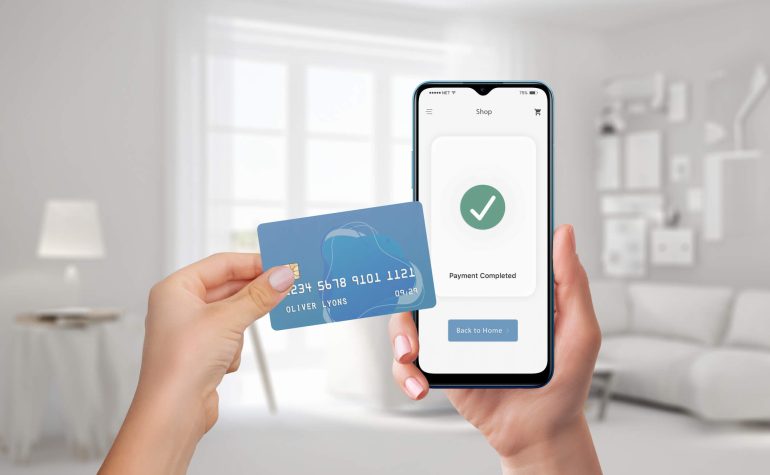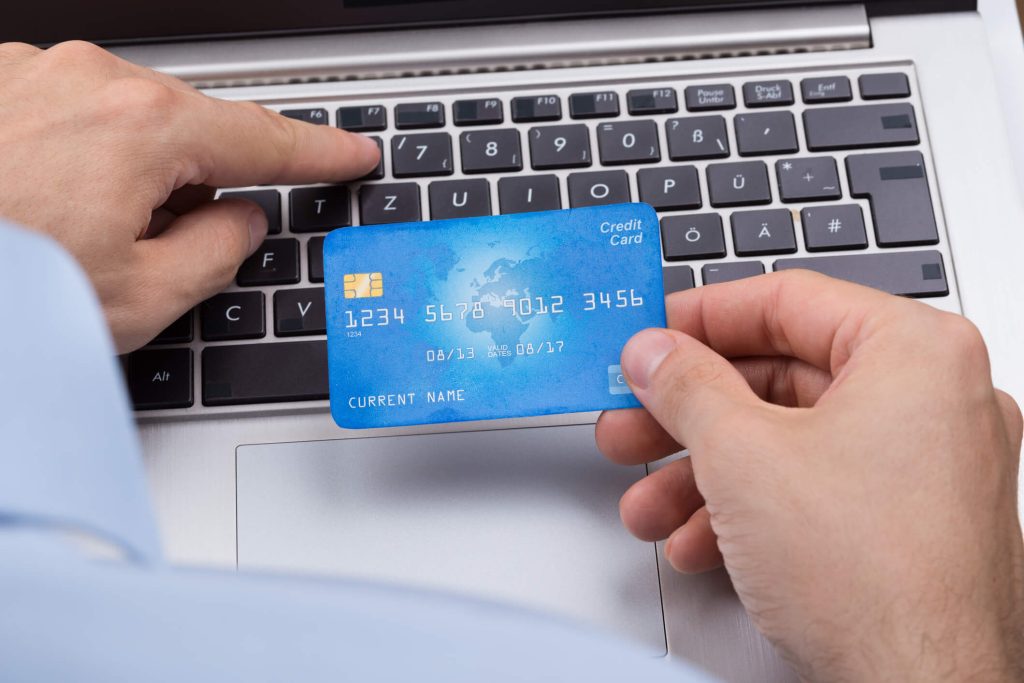
By alphacardprocess September 30, 2024
In today’s digital age, online transactions have become an integral part of our daily lives. From purchasing goods and services to paying bills, the convenience of online transactions cannot be denied. However, with the rise in cybercrime and fraudulent activities, it has become crucial to ensure the security of these transactions, especially in high-risk scenarios. This is where secure payment gateways play a vital role.
A secure payment gateway acts as a bridge between the customer, the merchant, and the financial institution, ensuring that sensitive customer data is protected during the transaction process. It encrypts the data and securely transmits it to the financial institution for authorization and processing. In high-risk transactions, where the chances of fraud are significantly higher, the importance of secure payment gateways cannot be overstated.
What are High-Risk Transactions and Why Do They Require Secure Payment Gateways?

High-risk transactions refer to those that involve a higher probability of fraud or chargebacks. These transactions are typically associated with industries such as online gambling, adult entertainment, pharmaceuticals, and travel, where the risk of fraudulent activities is relatively higher. In such scenarios, secure payment gateways become essential to protect both the customer and the merchant.
Secure payment gateways provide an added layer of security by implementing various fraud prevention measures. They use advanced technologies such as tokenization, encryption, and fraud detection systems to ensure that sensitive customer data is safeguarded. By doing so, they minimize the risk of unauthorized access, data breaches, and fraudulent activities.
The Role of Secure Payment Gateways in Protecting Sensitive Customer Data
One of the primary roles of secure payment gateways is to protect sensitive customer data during online transactions. When a customer enters their payment information, such as credit card details, into a website or mobile app, the secure payment gateway encrypts this data to prevent unauthorized access. Encryption converts the data into an unreadable format, making it virtually impossible for hackers to decipher.
Furthermore, secure payment gateways also employ tokenization, a process that replaces sensitive data with unique tokens. These tokens are meaningless to anyone who does not have the encryption key, ensuring that even if the data is intercepted, it cannot be used for fraudulent purposes. This adds an extra layer of security to high-risk transactions, making it extremely difficult for cybercriminals to gain access to sensitive customer information.
Key Features to Look for in a Secure Payment Gateway for High-Risk Transactions
When choosing a secure payment gateway for high-risk transactions, there are several key features that merchants should consider. These features ensure that the payment gateway is capable of providing the necessary security measures to protect both the customer and the merchant. Some of the essential features to look for include:
- PCI DSS Compliance: Payment Card Industry Data Security Standard (PCI DSS) compliance is a must-have feature for any secure payment gateway. It ensures that the gateway meets the industry’s security standards and follows best practices for protecting customer data.
- Advanced Fraud Detection: A secure payment gateway should have robust fraud detection systems in place. These systems use machine learning algorithms and artificial intelligence to analyze transaction patterns and identify potential fraudulent activities.
- Two-Factor Authentication: Two-factor authentication adds an extra layer of security by requiring customers to provide additional verification, such as a one-time password or fingerprint scan, before completing a transaction.
- Tokenization: As mentioned earlier, tokenization is a crucial feature that replaces sensitive customer data with unique tokens. This ensures that even if the data is compromised, it cannot be used for fraudulent purposes.
- Secure Data Transmission: The payment gateway should use secure protocols, such as SSL/TLS, to encrypt data during transmission. This prevents unauthorized access and ensures that customer data remains confidential.
- Chargeback Protection: High-risk transactions often come with a higher risk of chargebacks. A secure payment gateway should have chargeback protection mechanisms in place to help merchants dispute and prevent fraudulent chargebacks.
- Real-Time Monitoring and Reporting: The payment gateway should provide real-time monitoring and reporting capabilities, allowing merchants to track transactions, identify potential fraud, and take immediate action if necessary.
How to Choose the Right Secure Payment Gateway for Your High-Risk Transactions
Choosing the right secure payment gateway for high-risk transactions can be a daunting task. However, by considering a few key factors, merchants can make an informed decision that aligns with their specific needs. Here are some steps to guide you in choosing the right secure payment gateway:
- Assess Your Business Needs: Start by assessing your business requirements and the specific risks associated with your industry. Identify the features and functionalities that are crucial for your high-risk transactions.
- Research Payment Gateway Providers: Conduct thorough research on different payment gateway providers. Look for providers that specialize in high-risk transactions and have a proven track record of providing secure and reliable services.
- Check for Industry Certifications: Ensure that the payment gateway provider is PCI DSS compliant and holds other relevant industry certifications. This demonstrates their commitment to security and adherence to industry standards.
- Evaluate Security Features: Carefully evaluate the security features offered by each payment gateway provider. Consider features such as encryption, tokenization, fraud detection systems, and chargeback protection mechanisms.
- Consider Integration Options: Determine whether the payment gateway can seamlessly integrate with your existing systems, such as your website or mobile app. Compatibility and ease of integration are crucial for a smooth transaction process.
- Compare Pricing and Fees: Compare the pricing and fees of different payment gateway providers. Consider factors such as transaction fees, setup fees, monthly fees, and any additional charges for high-risk transactions.
- Read Customer Reviews and Testimonials: Look for customer reviews and testimonials to get insights into the experiences of other merchants. This can help you gauge the reliability and customer satisfaction levels of the payment gateway provider.
- Seek Expert Advice: If you are unsure about which payment gateway provider to choose, consider seeking advice from industry experts or consultants who specialize in high-risk transactions. They can provide valuable insights and recommendations based on your specific needs.
Implementing Secure Payment Gateways: Best Practices and Considerations
Implementing secure payment gateways for high-risk transactions requires careful planning and consideration. Here are some best practices and considerations to keep in mind during the implementation process:
- Conduct Regular Security Audits: Regularly assess the security of your payment gateway by conducting security audits. This helps identify any vulnerabilities or weaknesses that need to be addressed promptly.
- Train Employees on Security Protocols: Educate your employees on security protocols and best practices to ensure that they understand the importance of safeguarding customer data. This includes training them on how to identify and report potential fraudulent activities.
- Monitor Transaction Patterns: Keep a close eye on transaction patterns and monitor for any suspicious activities. Implement real-time monitoring systems that can alert you to any anomalies or potential fraud attempts.
- Stay Updated with Security Updates: Stay informed about the latest security updates and patches released by your payment gateway provider. Regularly update your systems to ensure that you have the latest security features and protections in place.
- Implement Strong Password Policies: Enforce strong password policies for all employees who have access to the payment gateway. This includes using complex passwords, regularly changing them, and implementing multi-factor authentication where possible.
- Regularly Backup Data: Regularly backup customer data to ensure that it can be restored in the event of a data breach or system failure. Implement secure backup procedures and test the restoration process periodically.
- Stay Informed about Industry Trends: Stay up to date with the latest industry trends and developments in payment gateway security. This allows you to proactively implement new security measures and stay one step ahead of potential threats.
Common Challenges and Risks Associated with High-Risk Transactions and Payment Gateways
While secure payment gateways provide significant protection against fraud and unauthorized access, there are still some challenges and risks associated with high-risk transactions. It is essential for merchants to be aware of these challenges and take appropriate measures to mitigate them. Some common challenges and risks include:
- Increased Chargebacks: High-risk transactions often come with a higher risk of chargebacks. Chargebacks occur when customers dispute a transaction and request a refund from their financial institution. Merchants need to have robust chargeback management systems in place to prevent and dispute fraudulent chargebacks.
- False Positives: In an attempt to prevent fraud, secure payment gateways may sometimes flag legitimate transactions as fraudulent. This can lead to false positives, where genuine customers are denied access to products or services. Merchants should regularly review and fine-tune their fraud detection systems to minimize false positives.
- Compliance Requirements: High-risk transactions often come with additional compliance requirements, such as Know Your Customer (KYC) regulations and Anti-Money Laundering (AML) laws. Merchants need to ensure that their payment gateway provider can support these compliance requirements and provide the necessary documentation and reporting.
- Technical Integration Challenges: Integrating a secure payment gateway into existing systems can sometimes be challenging, especially if the systems are complex or outdated. Merchants should work closely with their payment gateway provider to ensure a smooth integration process and minimize any disruptions to their business operations.
- Evolving Fraud Techniques: Cybercriminals are constantly evolving their fraud techniques to bypass security measures. Merchants need to stay informed about the latest fraud trends and continuously update their fraud prevention systems to stay one step ahead of potential threats.
Frequently Asked Questions (FAQs)
Q.1: What is a secure payment gateway?
A secure payment gateway is a technology that facilitates the secure transmission of customer payment information during online transactions. It encrypts the data and transmits it securely to the financial institution for authorization and processing.
Q.2: Why do high-risk transactions require secure payment gateways?
High-risk transactions involve a higher probability of fraud or chargebacks. Secure payment gateways provide additional security measures, such as encryption, tokenization, and fraud detection systems, to protect sensitive customer data and minimize the risk of unauthorized access and fraudulent activities.
Q.3: What are some key features to look for in a secure payment gateway for high-risk transactions?
Some key features to look for in a secure payment gateway for high-risk transactions include PCI DSS compliance, advanced fraud detection, two-factor authentication, tokenization, secure data transmission, chargeback protection, and real-time monitoring and reporting.
Q.4: How can I choose the right secure payment gateway for my high-risk transactions?
To choose the right secure payment gateway for your high-risk transactions, assess your business needs, research payment gateway providers, check for industry certifications, evaluate security features, consider integration options, compare pricing and fees, read customer reviews and testimonials, and seek expert advice if needed.
Q.5: What are some best practices for implementing secure payment gateways for high-risk transactions?
Some best practices for implementing secure payment gateways for high-risk transactions include conducting regular security audits, training employees on security protocols, monitoring transaction patterns, staying updated with security updates, implementing strong password policies, regularly backing up data, and staying informed about industry trends.
Conclusion
In conclusion, secure payment gateways play a crucial role in protecting sensitive customer data during high-risk transactions. They provide an added layer of security by encrypting data, implementing fraud detection systems, and offering features such as tokenization and chargeback protection.
By choosing the right secure payment gateway and implementing best practices, merchants can minimize the risks associated with high-risk transactions and provide a secure and seamless payment experience for their customers. It is essential for businesses to prioritize the security of their online transactions to build trust with their customers and protect their reputation in an increasingly digital world.
